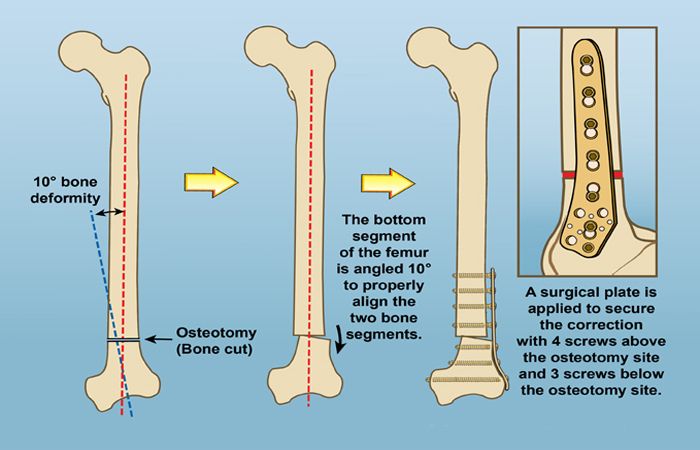Before we start understanding orthopedic plates, we need to know that in the last few years, surgical plates and screws used to mend bone fractures. They have seen several modifications and upgrades in design issues. The tension band principle was first defined and applied in non-unions and fracture treatments by Friedrich Pauwels.
What is the usage of an orthopedic plates implant?
Orthopedic implants are generally there to provide bone fixation. An orthopedic plate is an internal fixation device that holds the bone fractures in place, allowing the bones to heal. They bind the injured bone together with the help of surgical screws. They find usage in various body joints to replace the articulating surfaces. A human body might require repairing the bone and joints.
The repairing could result in bone injury, the aging process, or any disease responsible for destroying the bone immune system. Orthopedic plates are used to fully replace the joints or replace them, depending on the damage that has been caused on the joint or other damaged regions. When a joint is damaged beyond repair, it is removed and replaced by surgical implants.
Benefits of orthopedic plates
Plates used for fractures are known for the beneficial factors in the surgical sector and are being widely used in bone fixation fractures.
- It aids in the anatomic reduction of the fractures in an environment of open techniques.
- Orthopedic implants substantially aid in providing mobility to the patient. Simultaneously, decreasing the pain in the process. In this situation, the patient is pushed forward in leading quality and improved life.
- Plates provide stability to the early functioning of the units and joints concerning muscles and tendons.
- Most of the plates are made of titanium and are not harmful to the human body.
- An essential advantage of using orthopedic titanium bone plates is that it helps to repair the broken bones quickly. Thus, involving a less amount of time for recovery.
- If the patient is above sixty, then there remains no need to remove the plates that are there inside the body. Moreover, the patient can enjoy easy movements without any hindrance.
- Researches indicate that the patient’s weight determines whether to remove the plate or not. If the patient is underweight, then plate removal is unnecessary. As with a lesser bodyweight, the plates are less troubling in everyday life. With more bodyweight, the question of removal of surgical plates and screws from the bodyarises.
- Then, there is bone plate application on the lower sections of the patient’s body. In this case, as well there is no need to remove the plates used for fractures.
- Also, it must be contemplated that from pre-mature weight-bearing, the plates are supposed to be secured.
Drawbacks of orthopedic plates
The drawbacks of orthopedic plates and screws included –
- The preliminary problem that might arise includes loosening the bone plates and misplacements from the place of application. It requires repairing from time to time.
- Protection from stress and occurring of osteoporosis below the plates used for fractures is another significant drawback of this implant.
- The risk factor of bone refractures remains after the removal of the plates.
- Plate irritation might take place in some cases.
- The immunologic reaction can also occur. However, that happens only in exceptional cases.
- Plates help in the interception of deforming forces that are otherwise not restrained by only screws.
- Optimum stability should be there for fracture reduction, and plates need countering to maintain the stability.
- The implementation of the screws is crucial and has a high difficulty level since incorrect placements or sequential disorder of the screws might result in displacement or shear. Also, there might be a loss of reduction.
- One should go for orthopedic plates and screw removal if the patient is under sixty and an adult, as they are capable of causing a disturbance in normal human growth.
What Other Considerations Should be there?
While sterile conditions and advanced surgical techniques aid in the implantation of internal fixation. However, there remains a possibility for the risk of infection. One needs to keep in mind specific facts considering the severity of the bone fracture. It includes the location and the medical condition of the patients is also a necessary part of the implantation process.
Moreover, we also need to consider that no medical technique can guarantee 100 percent successful healing. The healing procedure of the fracture might not be complete, or in some cases, there might be a breakdown or deformation of the plates. Though not a fact, a notion is there that prolonged implant might cause cancer. It is a debatable issue.
Related Blog:- How to Fix Common Sleep Problem?
On the last note, orthopedic researchers are continuing with their research works. They are trying to find an improved yet artificial method of orthopedic implantation of bones and screws. They believe it will heal bone fractures.

